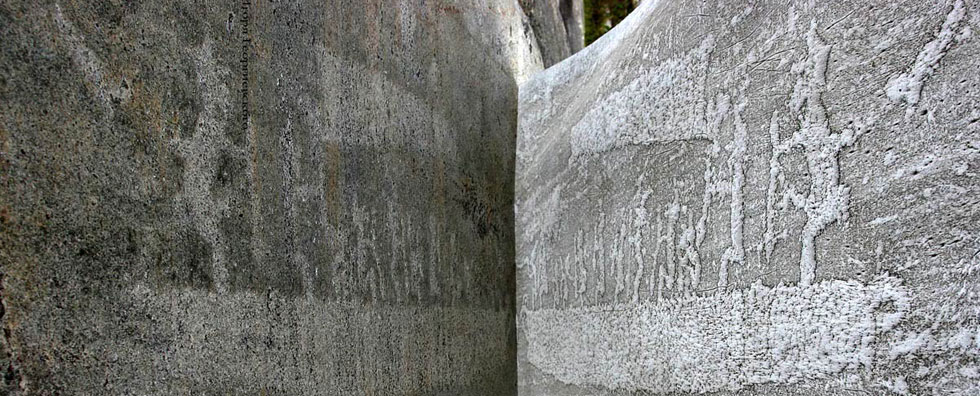
Issue №1, Vol. 22
Lukashevich V., Kuznetsov A., Viktorova T. Cost-benefit analysis of high-intensity thinning technology adoption // Resources and Technology. 2025. №1, Vol. 22. P. 72‒89.
DOI: 10.15393/j2.art.2025.8323
Cost-benefit analysis of high-intensity thinning technology adoption
| Lukashevich Viktor Mikhailovich | Petrozavodsk State University, lvm-dov@mail.ru |
| Kuznetsov Aleksey Vladimirovich | Petrozavodsk State University, kuzalex@psu.karelia.ru |
| Viktorova Tatyana Vitalievna | Petrozavodsk State University, miomiramic2019@icloud.com |
|
Key words: improvement thinning increment felling harvester. |
Summary: Conducting effective forest management in compliance with silvicultural principles allows obtaining more high-quality raw materials per unit area and the opportunity to increase the profit of a logging enterprise. Therefore, justification of high-intensity thinning operations introduction and assessment of their silvicultural, technological and economic efficiency is a relevant and practice-oriented direction of scientific research. The oobjective of the study was to analyze the efficiency of improvement thinning intensification. The authors analyzed data on thinning operations (severance cutting and increment felling) for 2022—2023 on the territory of the forest area of OOO Shuyales (Pryazhinskoye central forestry). To simulate the development of the forest stand taking into account the requirements of the forest tending rules, we selected the most typical site for the studied territory (bilberry pine forest, basal area per hectare of 28 m2/ha, height 18 m, growth class 2.5, age 55 years, stock 241 m3/ha). The analysis showed that the greatest economic effect was achieved with high-intensity increment felling. Compared with the first scenario (low-intensity improvement thinning of 15—20 %), the profit per 1 m3 in the second scenario (intensity of 21—40 %) increased by 13 %, in the third scenario (intensity of 41—55 %) — by 31 %. In terms of per hectare, the profit in the second scenario increased by 36 %, in the third scenario — by 57 %. The effect of introducing high-intensity thinning was achieved by increasing the volume of harvesting per unit area per growing cycle and obtaining higher-quality assortments by the time of clear cutting. Due to the silvicultural effect, the volume of harvesting per unit area increased by 17—20 %. Evaluation of the technological efficiency of the John Deere 1270G harvester in the studied conditions showed that during high-intensity thinning the harvester's shift productivity dropped by 5—16.5 %, but by the time of clear cutting, due to the increase in the average volume of the tree length, the productivity increased by 26.3 %.Objective of the study: Analysis of the efficiency of increasing the intensity of improvement thinning. Tasks: 1. Formation and analysis of a database on improvement thinning in the forest areas of OOO Shuyales; 2. Evaluation of the efficiency of improvement thinning, depending on its intensity; 3. Analysis of harvester performance, depending on the intensity of thinning. The authors of the paper conducted an analysis of data on actually carried out thinning (severance cutting and increment felling) for 2022-2023 on the territory of the forest area of OOO Shuyales (Pryazhinskoye central forestry).
To simulate the development of the forest stand taking into account the requirements of the forest tending rules, we selected the most typical site for the studied territory (forest type - bilberry pine forest, basal area per hectare of 28 m2/ha, height 18 m, growth class 2.5, age 55 years, stock 241 m3/ha). The analysis showed that the greatest economic effect is achieved with high-intensity increment felling.
Compared with the first scenario (low-intensity improvement thinning of 15-20 %), the profit per 1 m3 in the second scenario (intensity of 21-40 %) increases by 13 %, in the third scenario (intensity of 41-55 %) - by 31 %. In terms of per hectare, the profit in the second scenario increases by 36 %, in the third scenario - by 57 %. The effect of introducing high-intensity thinning is achieved by increasing the volume of harvesting per unit area per growing cycle and obtaining higher-quality assortments by the time of clear cutting.
Due to the silvicultural effect, the volume of harvesting per unit area increased by 17-20 %. Evaluation of the technological efficiency of the John Deere 1270G harvester in the studied conditions showed that during high-intensity thinning, the harvester's shift productivity drops by 5-16.5 %, but by the time of clear cutting, due to the increase in the average volume of the tree length, the productivity increases by 26.3 %. |
Displays: 359; Downloads: 152;




